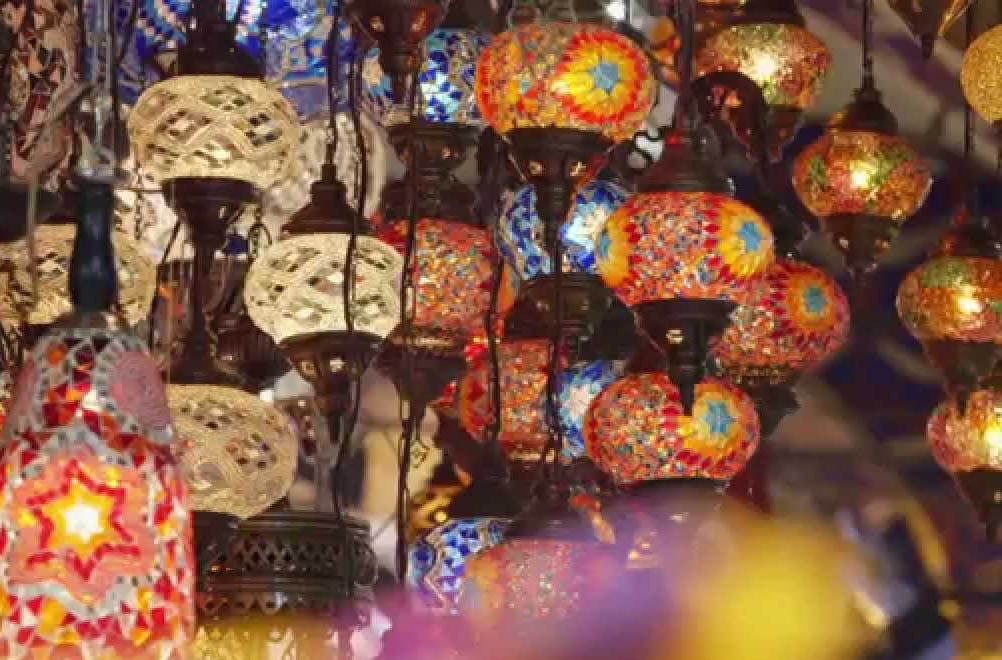
A tv series highlights the achievements of Muslim scientists

Dear all,
As the ranting of contemporary Muslim militants and neophytes begins to sound increasingly irrational, it is good to be reminded that it was not always so for people of the faith or under the empires of Islam.
The reminder of this has come most recently in the form of an excellent Al Jazeera tv series called Science in a Golden Age, which looks at the contributions made by scholars in the medieval Islamic period in various fields of learning. The series, which was first aired last Autumn, is presented by scientist Jim A Khalili who a few years ago was able to make programmes on the BBC about the history and development of Chemistry that seemed absolutely fascinating (yes, truly -- chemistry!).
Jameel Sadiq (aka Jim) Al Khalili is a Baghdad-born theoretical physicist and author and a Professor at the University of Surrey who in recent years has become famous as a science broadcaster. After his BBC work comes this fascinating series of programmes on Al Jazeera in which Al Khalili looks at the research and findings of various Muslim/Arab scholars in fields like optics, astronomy, algebra and medicine.
As he points out: "One thousand years ago, the Islamic empire witnessed one of the greatest periods of sustained scientific advancement in history. In the medieval world’s great centres of learning -- places like Baghdad, Cairo, Cordoba and Samarkand -- discoveries were made, ideas nurtured and methods developed. In Baghdad, for example, we find the very first book on algebra called Kitab al-Jabr (from which we derive the word ‘algebra’), it was written by the 9th century Persian mathematician, Al-Khwarizmi, and signified a significant paradigm shift from the work of the Ancient Greeks."
The quest for knowledge via intense observation and analysis had official support: "In the 9th century, the Abbasid caliph Al-Ma’mun created a new academy in Baghdad, called the House of Wisdom, and built observatories there and in Damascus. He sponsored science projects that made vast improvements in the fields of astronomy and geography, and where scholars of different faiths worked together. During this period "advances in medicine and anatomy…. saw Arabic texts replace the works of Galen and Hippocrates in the libraries of medieval Europe. While the philosophers Ibn Sina and Ibn Rushd influenced later European scholars, such as Roger Bacon and St Thomas Aquinas."
The legacy of these scholars endures -- like "Cordoban physician Al-Zahrawi [who] invented more than 200 surgical instruments -- many of which, like forceps and the surgical syringe, are still in use today." Al Khalili takes us through ideas and discoveries, conclusions and theories with an enthusiasm that is infectious and inspiring, and he actually shows us many of these treatises: beautifully annotated Arabic manuscripts, the sight of which adds considerably to the excitement of his narrative.
It is good to be reminded of this work that was produced in a golden age of Islam. Particularly for those of us who can recall Pervez Hoodbhoy’s articles (in the Herald, 1988) on the nonsense that was then being passed off as Islamic science in the Zia era. The projects he documented were absolutely absurd -- much better suited to works of magical realism than to a scientific laboratory.
But while Al Khalili laments the decline in Muslim countries’ of this tradition of scholarship, he also highlights projects that give one hope. One such, is SESAME. It will be the Middle East’s first major international research centre. Standing for ‘Synchrotron-light for Experimental Science and Applications in the Middle East’, it is a cooperative venture by scientists and governments across the region."
Recommended viewing.